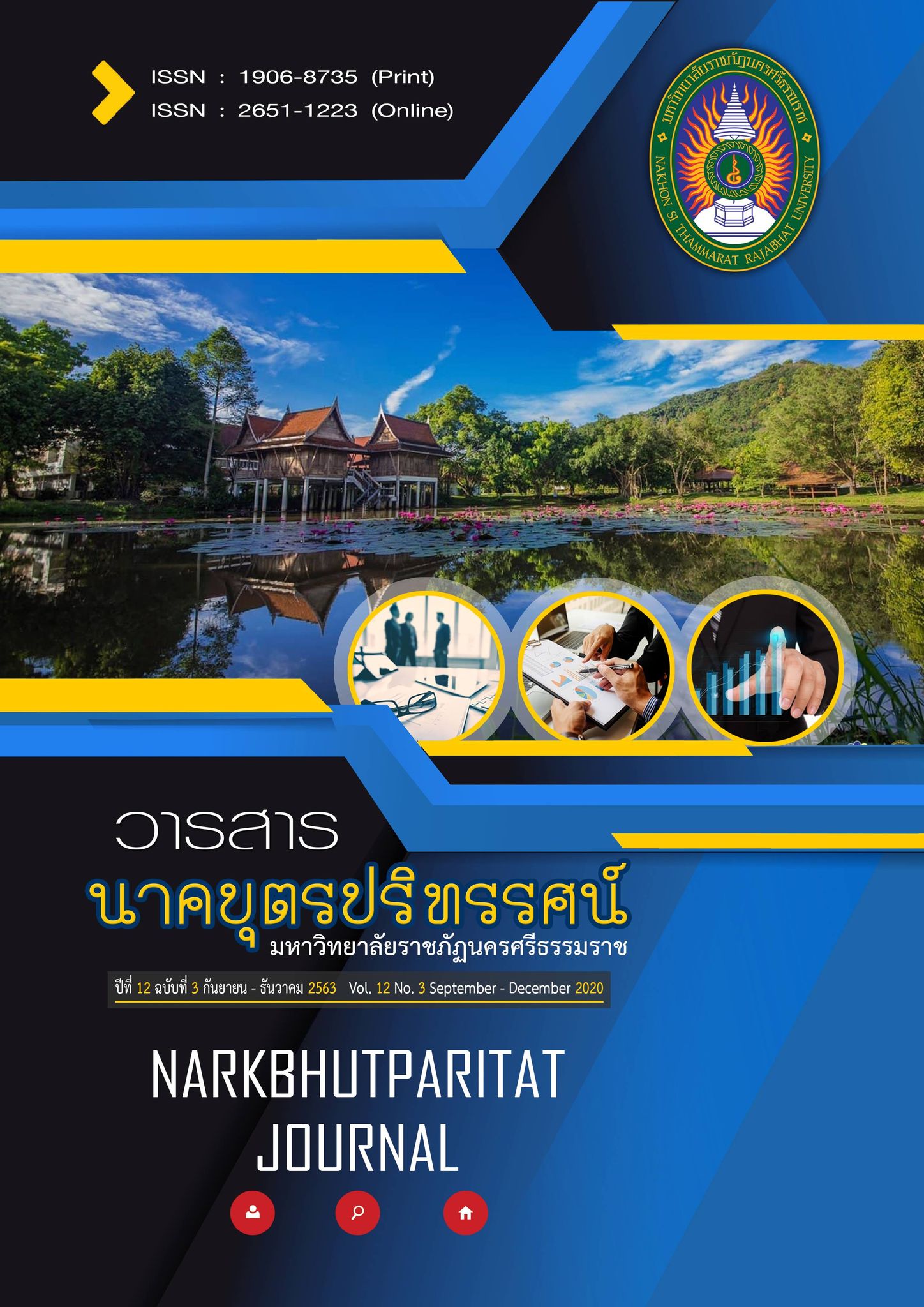Community Water Resources Management For Sustainable Agriculture
Main Article Content
Abstract
Water is very important for all lives. The agriculture needs the water for the growth and to be food security. The physical planet has changed such as climate change, drought and others and these changes have made the water unstable. The hypothesis was “The water resource management and collaboration have a profound effect on sustainable agriculture”. The objectives were to 1) study the nesscessity of water for agriculture 2) study the collaboration and 3) find "community water resource management for sustainable agriculture approach". This research was a qualitative study which was conducted based on Walter Wallace Wheel’s Diagram, documentary research and indepth interviews in four areas.
The research found that: the valuable ideas and theories, roles and responsibilities for community water resource management for sustainable agriculture as 18 findings created an approach called “Community Water Resources Management for Sustainable Agriculture Approach: CWRMSAA Approach”. Thus the public sector, the private sector and the civil society need to work together for sustainable agriculture.
Therefore, the final needed impaction will be “Sustainable Agriculture” which consists of quantity of water, quality of water, future need of water, wellbeing, good mental health, water security and food security in order to be the quality of life of our future.
Article Details
References
Aldine. (1971). wallace-wheel.pdf - Soc 315 Wallace Wheel 1 Walter.... Retrieved 2019, October 6, fromhttps://www.google.co.th/search?q=Aldine.+(1971).+Walter+Wallace+Wheel.&tbm=isch&source=hp&hl=th&sa=X&ved=2ahUKEwiskISti4biAhXGLI8KHYgA38QsAR6BAgJEAE&biw=1129&bih=532
Denhardt, J. V., and Denhardt, R.B. (2007). The New Public Service: Serving, Not Steering. New York: M.E. Sharpe, Inc. 27.
Capua J. (2013). Worldwatch Worries that Water Shortage Problems Around the World are Tougher. Retrieved 2019, September 1, from https://www.voathai.com/a/water-scarcity-tk/1636732.html.(in Thai)
Halpern P. (2018). Chaos Theory, The Butterfly Effect, And The Computer Glitch That Started It All. Retrieved 2019, November 25, from https://www.forbes.com/sites/ startswithabang /2018/02/13/chaos-theory-the-butterfly-effect-and-the-computer-glitch-that-started-it-all/#3b527f2469f6
Laothamatas, A., and Rattanaset, W. (2014). Civic Public Administration. Bangkok: Dhurakij Pundit University. 32-34. (inThai)
Panacha, S. (2015). Participatory theory. Retrieved 2019, September 10, from http://dspace.spu.ac.th/bitstream/123456789/4541/6/บทที่%202%20สิงห์%20ปานะชา%
PHD-2555.pdf
Royal Irrigation Department. (2017). Royal Irrigation Department Strategy 20 years (2017-2036). Retrieved 2019, September 7, from http://water.rid.go.th/hydhome/ma/60/6591.pdf.
(In Thai)
Taya, M. (2019). Sufficient Economy. Retrieved 2019, September 10, from https://sites.google.com/site/malaneemay/neuxha-bth-reiyn/prathesthiy-kab-sersthkic-phx-pheiyng
The Chaipattana Foundation. (2019). The Concept of Development for the Self-Reliance of Farmers due to the Royal Majesty in King Rama 9. Retrieved 2019, September 10, from http://www.chaipat.or.th/site_content/70-3/283-self-reliance.html
The Ministry of Agriculture and Cooperatives. (2017). Summary of the land use in Thailand. Retrieved 2019, September 7, from http //agri-map-online. moac.go.th/
United Nations Population Division. (2019). World-population. Retrieved 2019, November 25, from https://www.worldometers.info/world-population/


